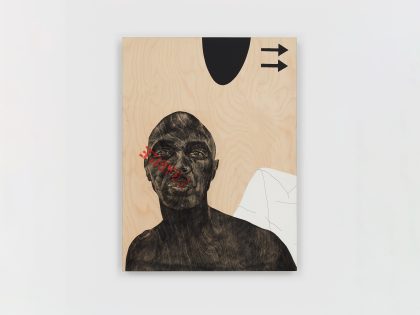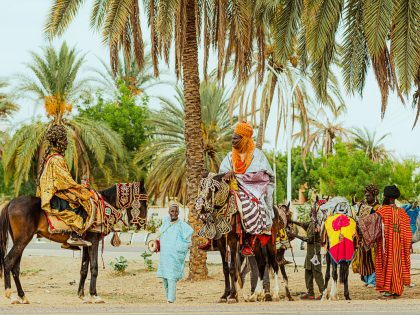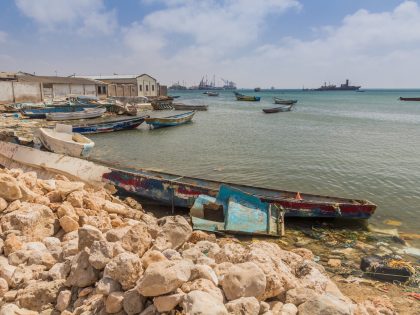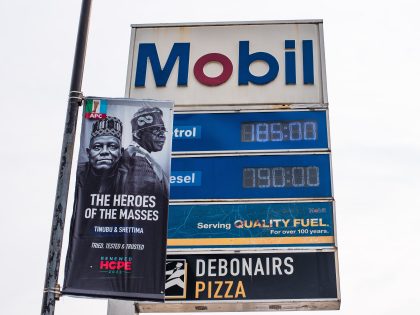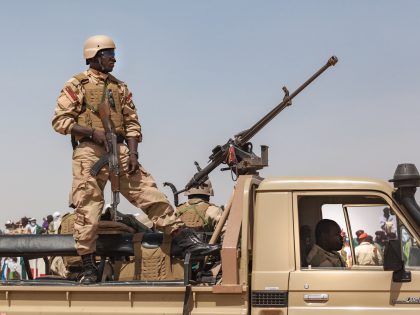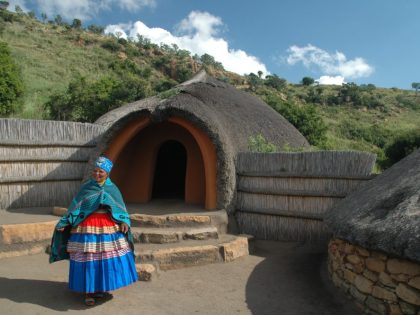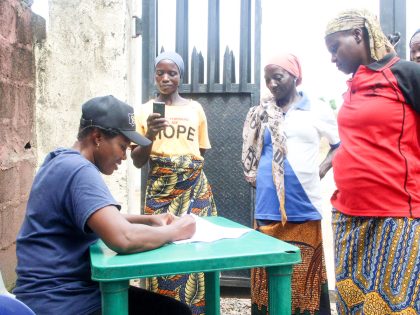The lions and the hunters
Lions and black people are not the same or even straightforwardly comparable. But it is true that something wants them both dead.

The actors Meryl Street and Robert Redford in 'Out of Africa' (1985).
Denys and Kanuthia pulled up their sleeves and while the sun rose they skinned the lions. When they took a rest we had a bottle of claret and raisins and almonds, from the car; I had brought them with us to eat on the road, because it was New Year’s Day. We sat on the short grass and ate and drank. The dead lions, close by, looked magnificent in their nakedness: there was not a particle of superfluous fat on them, each muscle was a bold controlled curve, they needed no cloak, they were, all through, what they ought to be.
Karen Blixen can always be counted on to bring a certain sweetness to the grisly work of empire. Here we find her on the road to Narok, in colonial Kenya, with her paramour Denys Finch Hatton and his “boy” Kanuthia, drinking wine and having a nibble after a strenuous day of motoring through the bush and killing, first, a lioness who was feeding on a dead giraffe and, second, on the way home, a lion who happened on the scene of slaughter and had the misfortune of not putting two and two together. (I say they were drinking wine and having a nibble but of course we can assume that “they” did not include Kanuthia, the “native boy,” who is – like the car and the binoculars – part of the expedition’s machinery: the hand that holds your skinner’s knife, that passes you your gun, that wouldn’t even dream of sneaking some of your raisins.) The lions, dead and partially skinned, lie “close by” this domestic scene. They are – as Blixen so touchingly observes – unmasked in death. Dead, nothing about them is “superfluous;” dead, like a necrotic feline Adam and Eve, they are naked and unashamed; dead, they are “what they ought to be.”
Fast-forward ninety years. Last month, an American dentist named Walter J. Palmer shot a lion named Cecil outside Hwange National Park in Zimbabwe. It appears that Palmer, assisted by the Zimbabwean hunting party he contracted for £35,000, lured Cecil out of the national park with a carcass tied to a Jeep. When Cecil approached, Palmer shot him with a crossbow, wounding but not killing him. (Perhaps Palmer should have paid more heed to Karen Blixen’s insight, as she shot Lion No. 2 with the gun Denys Finch Hatton – read: Kanuthia – proffered her, that “the shot [is] a declaration of love, should the rifle not then be of the biggest caliber?”) The actual killing took place a day or two later, when Palmer and his party ran Cecil to ground and put a bullet in him. Palmer – read: his “native guides,” whom he would later blame for the cock-up – decapitated Cecil and skinned his body, leaving the rest to the vultures. It was only then that they discovered, and attempted to remove and destroy, a GPS tracking collar that Cecil was wearing as part of an Oxford University study. Unfortunately for Dr. Palmer, the lion he killed had friends.
The backlash has been swift and definitive. Palmer’s dental practice in Minnesota – the website boasts that the good dentist “has a unique talent for creating dazzling smiles” – has closed after a barrage of online and on-site protest. American comedian Jimmy Kimmel – in a segment on his late-night variety show in which he called the behavior of trophy hunters like Palmer “vomitous” and asked whether “it’s so difficult for…[him] to get an erection that…[he] has to kill things” – was moved nearly to tears by Cecil’s fate. This level of public opprobrium and grief, scarcely imaginable in Karen Blixen’s day, has in turn spawned its own meta-conversations about the work of mourning and the value of life. Mother Jones has lampooned U.S. Senator Marco Rubio for logging on to Twitter to ask why there was so much “outrage over a dead lion” but so little over embattled women’s healthcare provider Planned Parenthood and its “dead babies.” And – at the other end of the ideological spectrum – Black Lives Matter activists have taken the American public to task for mourning Cecil so much more publically and unequivocally than they have any of the black women and men who have died at the hands of the police. Brokely Carmichael and others on Black Twitter speculated as to what might have happened if Cecil were black; Roxanne Gay joked that she would “start wearing a lion costume” so that if someone shot her, “people will care.”
At their core, the criticisms that Carmichael and Gay – and, yes, Rubio too – are putting forward have to do with the relative grievability of different forms of life. The question why Cecil’s death might be more readily mournable than Sandra Bland’s or Samuel DuBose’s has special historical resonance, however, given the longstanding – and ongoing – struggle of black people the world over to be seen as fully human. Indeed, it is the assumption that black people are dangerous beasts that fuels the sort of grade-A paranoia that causes a white police officer, within seconds of arriving on the scene, to shoot a 12-year-old black boy playing with a toy gun in the chest. Lions – which are, it cannot be denied, actual dangerous beasts – are presumed innocent while black children are not. No amount of well-meaning commentary about the majesty of the lion and the threats that hunting poses to its already precarious future can take the sting out of that.
But perhaps there is a way to think these two things together. Much of the outrage directed at Dr. Palmer is predicated on the idea that hunting for sport is a thing of the past, a “vomitous” activity that – like the pith helmet – has no place in contemporary life. All indications, however, point to the fact that big-game hunting – and the white cultural chauvinism that has always sustained it, from not giving Kanuthia raisins on down – is alive and well in Africa. (When I first heard something had happened to a lion named Cecil in Zimbabwe, I hoped it was another manifestation of the Rhodes Must Fall movement: a repudiation of that other Cecil, lion of the Empire, chief architect of British colonialism in Southern Africa. Alas.) The same can be said for other forms of white supremacy in the U.S. and elsewhere; apologists for our supposedly “post-racial” moment can deny it all they want, but racism is hard to kill. Our real task now is to see the big picture, to track the work of imperialism and white supremacy across its many sites, from a national park in Zimbabwe to a street corner in Ferguson or Cincinnati. This is not to say that lions and black people are the same or even that they are straightforwardly comparable. But it is true that something wants them both dead – or, better, that something looks upon their dead bodies and feels as though they are, finally, “all through, what they ought to be.”











